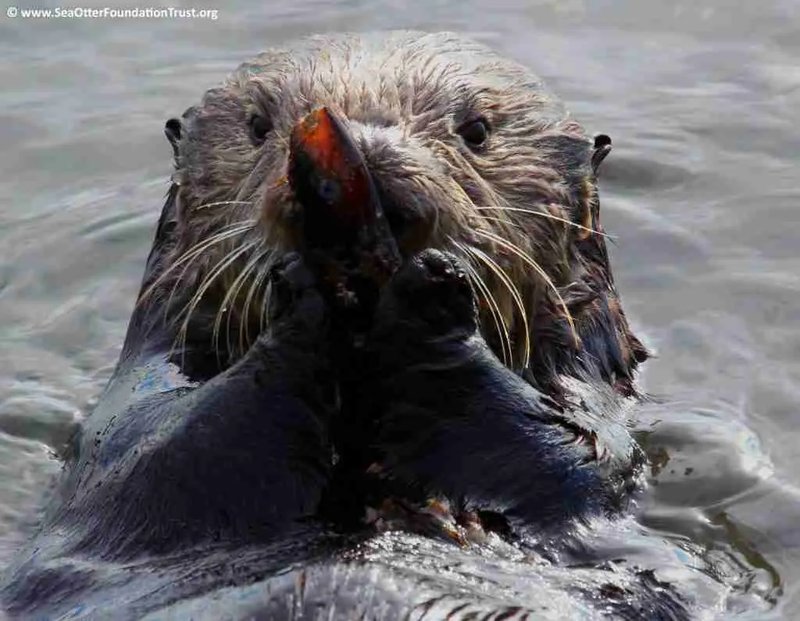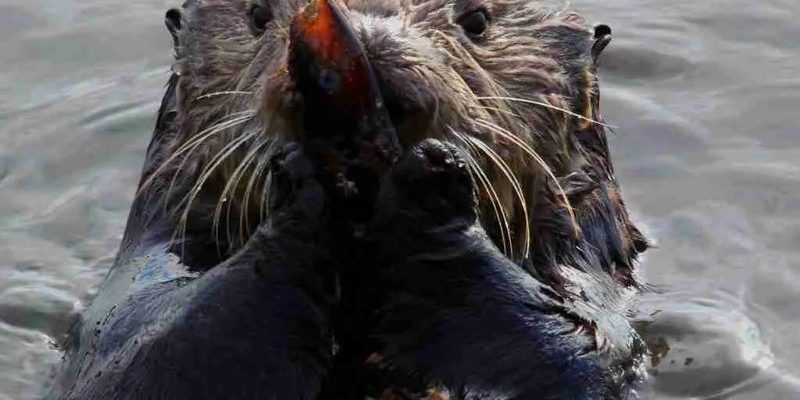
So, what exactly do sea otters eat, and how do they hunt? Let’s dive deep into their world and explore their impressive skills. From their specialized tools to their impact on marine life, this article will give you a closer look at how these charming creatures live and thrive.
What Do Sea Otters Eat?
Sea otters have a varied and interesting diet that largely consists of marine invertebrates. Think of them as the gourmet eaters of the ocean. They primarily hunt for:
- Sea urchins
- Crumbling clams
- Crabs
- Fish
- Mollusks (like snails and octopuses)
You might be wondering why they choose these items. Well, each food item plays a crucial role in their ecosystem. For instance, sea urchins can overpopulate if not kept in check, leading to the destruction of kelp forests. By dining on sea urchins, sea otters help maintain a healthy balance in their habitat. It’s like being a guardian of the reef!
Their diet can change with the seasons and availability, but they have a unique ability to adapt. Sea otters can consume around 25% of their body weight in food each day. That’s a lot of munching! Honestly, it’s impressive how they manage to keep their energy levels up while looking so cute.
Hunting Techniques: Tools of the Trade
Here’s the thing: sea otters are super skilled hunters. One of their most remarkable traits is their use of tools. Yes, you read that right! These crafty little creatures use rocks and other hard shells to crack open the shells of their prey, like clams and sea urchins. It’s like watching a tiny construction worker at the beach, deftly using tools to get what they want.
They often keep their favorite stones tucked under their armpits—seriously! This unique behavior not only shows their intelligence but also enhances their hunting efficiency. When it’s time to eat, they simply dive down, find a tasty snack, and get to work using their tools to access the delicious insides.
Sea otters also have a method of hunting that involves diving. They can hold their breath for up to five minutes while searching for food. Imagine diving into cool water and holding your breath while searching for lunch! Their incredible swimming abilities make them agile hunters, allowing them to maneuver through kelp forests and rocky shores with ease.
The Importance of Grooming
While it might seem trivial, grooming is a critical part of a sea otter’s daily routine. These furry creatures have the densest fur of any animal, which helps keep them warm in chilly waters. However, it’s not just about looking good; grooming also plays a huge role in their health and hunting abilities.
When sea otters groom themselves, they maintain their fur’s waterproof quality, ensuring they stay warm during dives. It’s a bit like putting on your favorite jacket before heading outside in winter. A well-kept coat means a better chance of survival. Plus, when they’re clean, they can swim more efficiently, making their hunting and foraging even more effective.
So, as they float on their backs, preening their fur and enjoying the ocean’s beauty, they’re also ensuring they’re ready for their next hunt. Who knew grooming could be so crucial?
Impact on Marine Ecosystems
Sea otters don’t just exist in a vacuum; they have a significant impact on their marine ecosystems. By controlling sea urchin populations, they help protect kelp forests, which are vital to many other marine species. The relationship between sea otters and their habitats is a perfect example of a predator-prey dynamic, where balance is key.
Without sea otters, sea urchins can overpopulate and destroy kelp forests. This not only affects the otters but also impacts countless other marine organisms that rely on kelp for shelter and food. When otters thrive, the entire ecosystem flourishes. It’s like a well-orchestrated symphony where every instrument plays a vital role.
Additionally, kelp forests provide essential habitats for fish, crabs, and other sea creatures. This means that by protecting sea otters, we’re also supporting the broader health of our oceans. It’s a win-win situation for the sea and all its inhabitants.
Challenges Sea Otters Face
Even though sea otters are impressive, they face threats that could endanger their populations. One major issue is pollution. Chemicals and plastics in the water can harm their health. Think of it like trying to cook a delicious meal with spoiled ingredients—it just doesn’t work out well.
Another challenge they face is habitat loss due to climate change and coastal development. Rising temperatures can affect their food sources, making it harder for them to find the meals they depend on. With their survival tied closely to the health of their marine ecosystems, any change in the environment can have drastic impacts.
Conservation efforts are crucial in helping these otters thrive. Organizations work tirelessly to protect their habitats and reduce pollution. It’s important for all of us to be aware of these issues and support initiatives that help keep our oceans clean and safe for these adorable creatures.
How You Can Help Sea Otters
You might be wondering how you can make a difference for sea otters. It starts with awareness and small actions. Here are a few ways you can contribute:
- Reduce plastic use: Use reusable bags, straws, and containers to decrease plastic waste.
- Support conservation efforts: Get involved with local organizations dedicated to ocean health.
- Practice responsible boating: Be careful around wildlife, and follow guidelines to avoid disturbing their habitats.
Every little bit helps. Even sharing information about sea otters with friends and family can raise awareness and spark interest in ocean conservation. Being an advocate for marine life doesn’t take much, but it can lead to significant change.
Sea otters are more than just cute faces in the ocean. Their diet and hunting strategies showcase their incredible adaptability and intelligence. By understanding what they eat, how they hunt, and the important role they play in marine ecosystems, we can appreciate these creatures even more.
With the challenges they face, it’s more important than ever for us to act responsibly toward their environment. By making conscious choices and supporting conservation efforts, we can help keep sea otters and their habitats thriving. After all, a healthy ocean means a brighter future for these furry little guardians of the sea.

